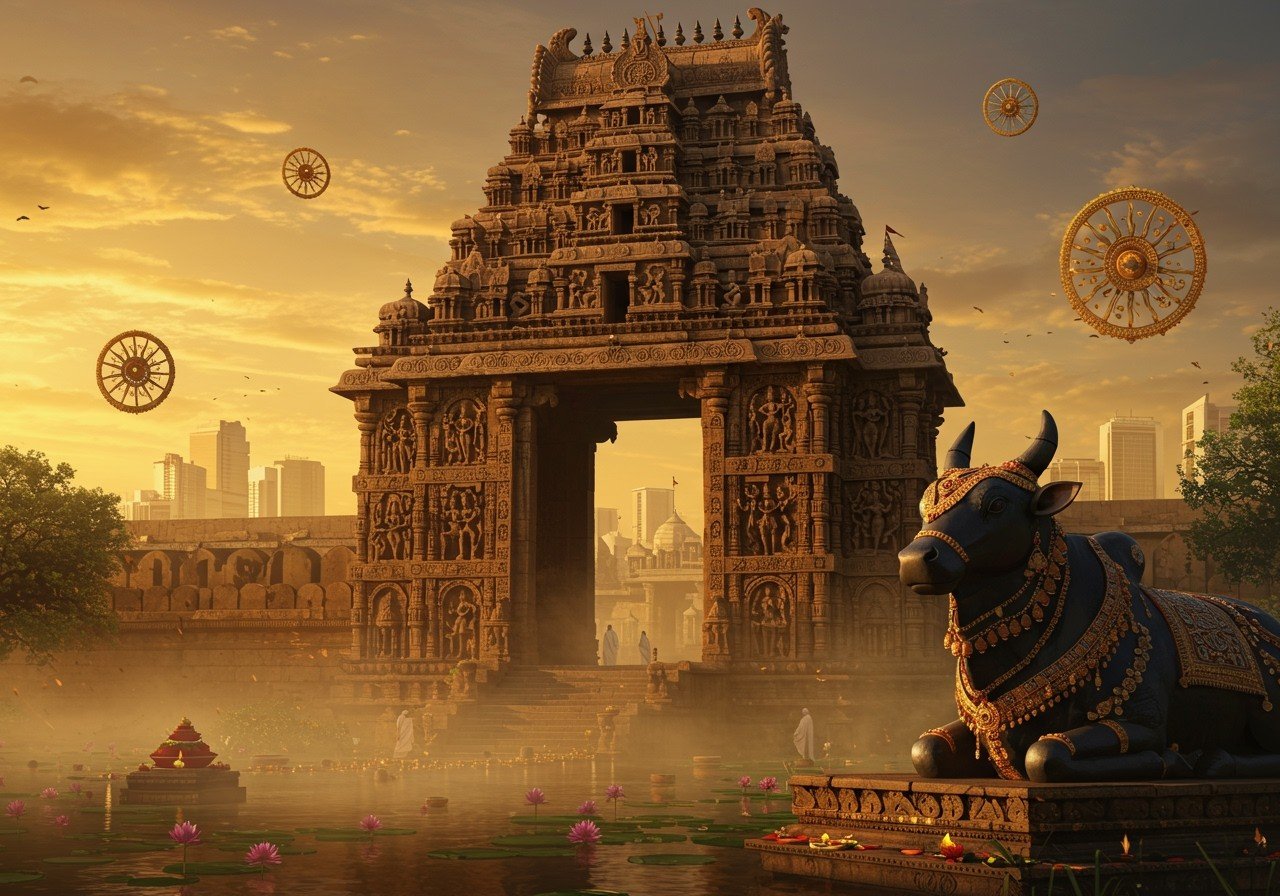
The Kakatiya dynasty, a prominent power in South India from the 12th to 14th centuries, left an indelible mark on the region’s history and culture. Ruling primarily from the Deccan region, their influence extended across present-day Telangana, Andhra Pradesh, and parts of Karnataka, Tamil Nadu, and Odisha. Their socio-political structure significantly shaped the region, laying the foundation for its cultural and economic development. Notable rulers like Ganapati Deva and his daughter, Rani Rudrama Devi, led the dynasty to its zenith before its eventual fall to the Delhi Sultanate in 1323 CE. The Kakatiyas are remembered for their significant contributions to architecture, economy, and literature in South India.
A Historical Overview: Rise and Fall of the Kakatiyas
The Kakatiya dynasty’s reign, spanning from approximately 1083 to 1323 CE, witnessed periods of both prosperity and conflict. Under the leadership of rulers like Prola II, Ganapati Deva, and Rudrama Devi, the dynasty expanded its territories and solidified its power base in Warangal, their capital city. This era saw significant military conquests, administrative reforms that fostered efficient governance, and economic growth fueled by flourishing trade and agriculture. However, internal strife, external invasions from the Delhi Sultanate, and economic challenges ultimately led to the dynasty’s decline.
Architectural Marvels: A Testament to Kakatiya Ingenuity
The Kakatiya dynasty’s architectural legacy is undeniable. Structures like the Warangal Fort, with its imposing stone gateways, showcase their military prowess and engineering skill. The intricate carvings and stunning granite work of the Thousand Pillar Temple exemplify their artistic sensibilities and mastery of stonework. The Ramappa Temple, a UNESCO World Heritage site, stands as a unique example of their innovative construction techniques, particularly the use of “floating bricks.” These architectural wonders continue to inspire awe and serve as a testament to the dynasty’s cultural and technological advancements.
Want to experience the spiritual legacy of the Kakatiyas? Poojn.in offers a wide selection of puja items and ritual materials that connect you to these ancient traditions. Explore our collection of camphor tablets, perfect for creating a sacred atmosphere during your puja ceremonies.
Governance and Administration: Shaping Socio-Political Structures
The Kakatiya dynasty implemented significant administrative reforms that shaped the region’s socio-political landscape. The Nayankara system, a form of decentralized governance, empowered local chieftains to manage their territories, fostering regional stability and efficient administration. Their economic policies, focused on promoting trade and agriculture, led to economic prosperity and laid the groundwork for future development. These administrative and economic practices continue to influence governance models in modern India.
Cultural Contributions: Art, Literature, and Language
Beyond architecture, the Kakatiyas were patrons of art, literature, and language. Their support significantly impacted Telugu literature, fostering a rich literary tradition that continues to thrive today. Their artistic influence is evident in the intricate sculptures and carvings adorning their temples and monuments. The Kakatiyas’ cultural contributions have enriched India’s heritage and continue to inspire artists and scholars.
Enhance your puja experience with authentic incense from Poojn.in. Discover our range of agarbatti and create a truly immersive spiritual atmosphere.
The Decline and Succession: A Turning Point in History
The decline of the Kakatiya dynasty was a result of a confluence of factors. Internal strife weakened the kingdom from within, while external invasions, particularly from the Delhi Sultanate, posed significant threats. Economic challenges further exacerbated the situation, ultimately leading to the fall of Warangal in 1323 CE. Following the Kakatiyas, the region came under the rule of various powers, including the Musunuri Nayaks, the Bahmani Sultanate, and the Qutb Shahi dynasty, each leaving their mark on the region’s history.
A Legacy that Endures: The Kakatiyas and Modern India
The Kakatiya dynasty’s legacy continues to resonate in modern India. Their architectural marvels stand as testaments to their ingenuity and artistic vision, inspiring architects and historians alike. Their governance practices and economic policies influenced subsequent administrative systems and contributed to the development of rural India. Their patronage of art, literature, and language enriched Telugu culture and continues to shape its identity. Preservation efforts are underway to protect Kakatiya monuments, ensuring that future generations can appreciate their historical and cultural significance.
Looking for traditional ghee for your havan ceremonies? Poojn.in has you covered. Browse our selection of Maya Ghee, specially prepared for puja rituals.
FAQs: Exploring the Kakatiya Dynasty
What defines the Kakatiya Dynasty? The Kakatiya Dynasty was a significant South Indian ruling power that controlled major portions of modern-day Telangana and Andhra Pradesh, existing from the 12th to the 14th century.
What was the Kakatiya Dynasty’s reign? The Kakatiya Dynasty’s rule spanned from approximately 1083 CE to 1323 CE.
What are the major contributions of the Kakatiya Dynasty to present-day India? The Kakatiyas left an indelible mark on India through their architectural accomplishments, like the Warangal Fort and Thousand Pillar Temple. Their patronage of Telugu literature, art, and culture also significantly shaped the region’s heritage.
Who governed Warangal after the Kakatiya Dynasty? Following the Kakatiyas, Warangal came under the control of the Delhi Sultanate, and later, the Bahmani Sultanate.
How did the Kakatiya Dynasty come to an end? The Kakatiya Dynasty fell in 1323 CE due to an invasion led by Muhammad bin Tughlaq of the Delhi Sultanate.
Why is the Kakatiya Dynasty important for modern India? The Kakatiya Dynasty’s significance lies in their architectural innovations, development of irrigation systems, and contributions to Telugu language and literature, all of which continue to influence contemporary Indian culture and heritage.
Is Warangal Fort still part of modern India? Yes, the Warangal Fort, a significant historical landmark from the Kakatiya era, remains a part of modern India.
What transpired after the Kakatiya Dynasty’s decline? The region faced political instability after the Kakatiya Dynasty’s fall and was subsequently governed by various dynasties, such as the Delhi and Bahmani Sultanates.


